
9/10th Cent. Guangdong type Greenware produced at Vietnam Tuan Chau Island
In 2008, Vietnam Quang Ninh museum announced that 10th century greenware consisting of pots, vases, bowls, cups and plates were recovered from Tuan Chau Island in Halong, Quang Ninh Province. The museum in collaboration with the Vietnam Institute of Archaeology and a French MA school carried out surveys and determined that there was traces of a kiln producing greenwares on the island. During the excavations, items such as firing supports, stack of bowls fused together, others ceramics waste or fragments of clay walls was found, indicating the presence of a kiln.

It was suggested that the main activity period of the site probably dates from the 8th to the 10th century. This is indeed an interesting and important discovery as the greenware shared similar characteristics of those produced in Guangdong kilns such as that at Xinhui Guan Chong.
During my trip to Halong in Apr 2015, I examined a few pieces belonging to the ex-museum curator of Quan Ninh Museum. He said that they were recovered from a site near the kiln in Tuan Chau. The external appearance of the pieces are similar to those made in Guangdong. It has similar form, glaze characteristics and the unglaze patches found on the interior of a bowl indicates that similar stacking method was used.
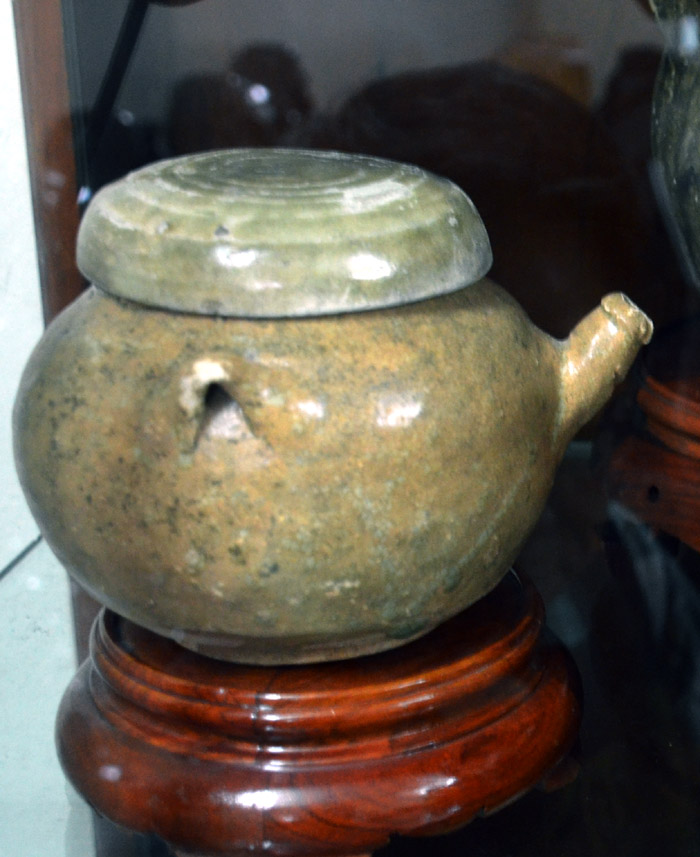 |
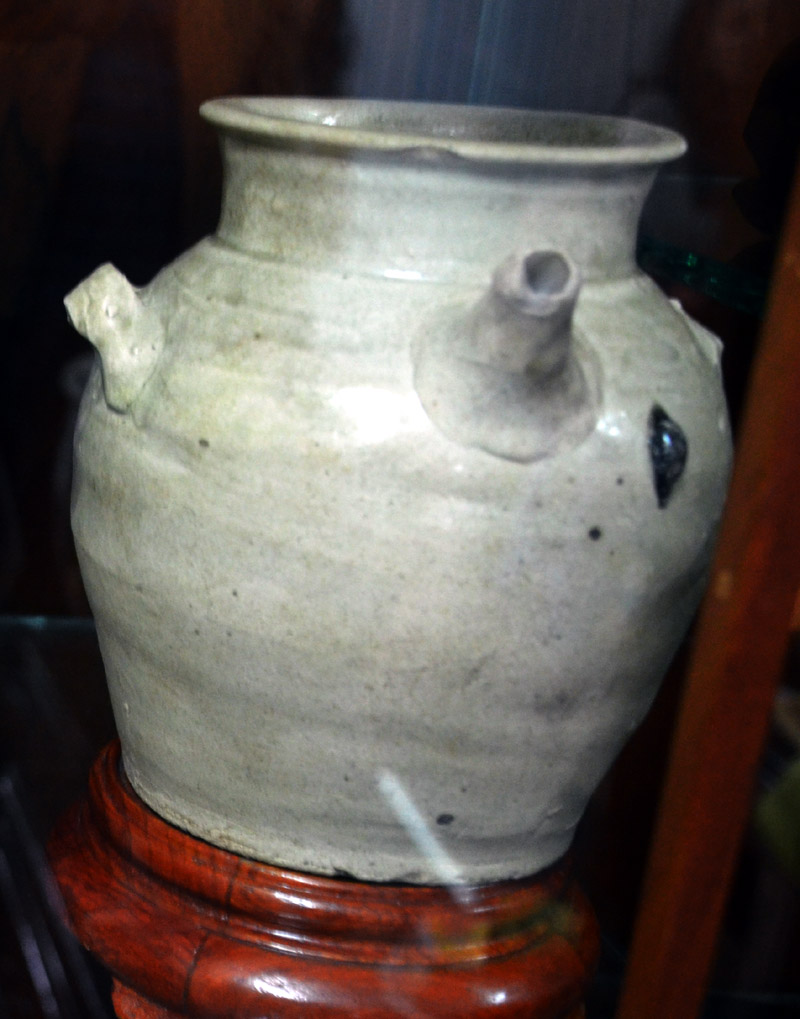 |
|
|
|
| 3 Greenware Pots belonging to Quan Ninh Museum Ex-curator | |
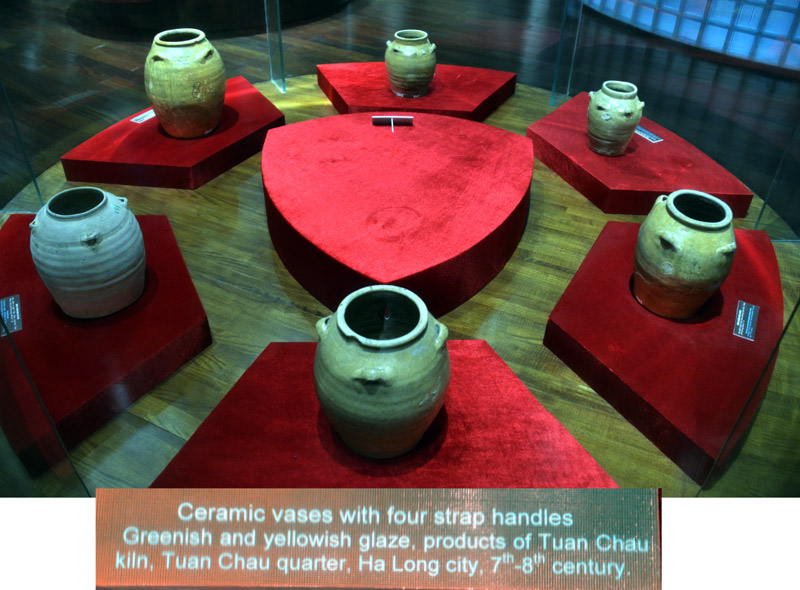
|
|
|
| Greenware Jars in Hanoi Museum | Similar Guangdong example from the Nanhan palace site of 10th Century. |
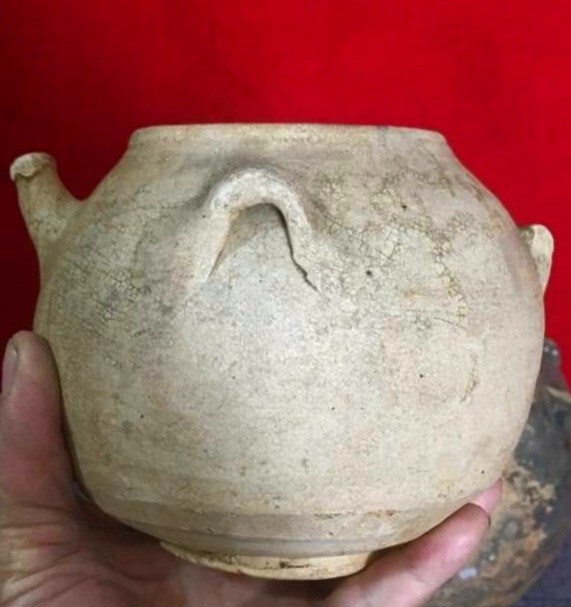 |
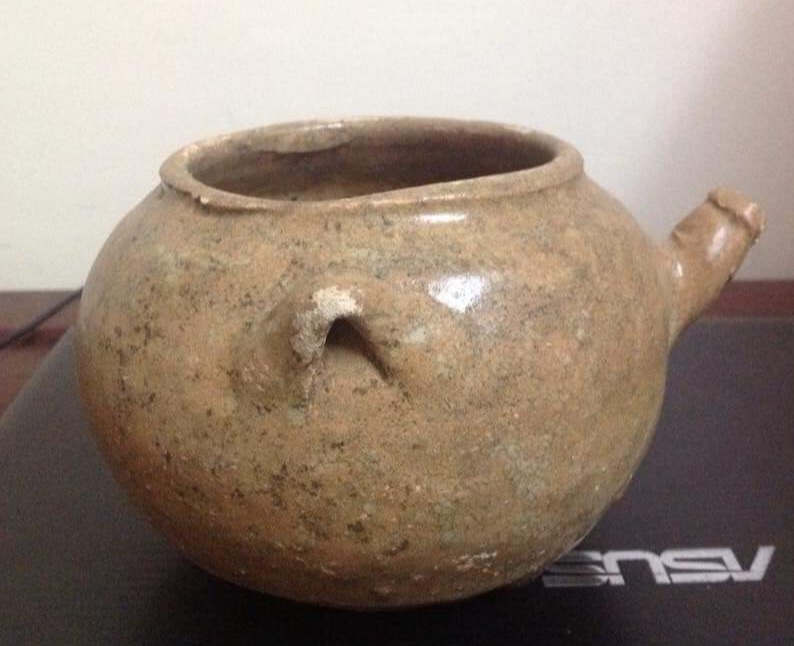 |
|
9/10th cent.
Vietnamese Guangdong type pots |
|
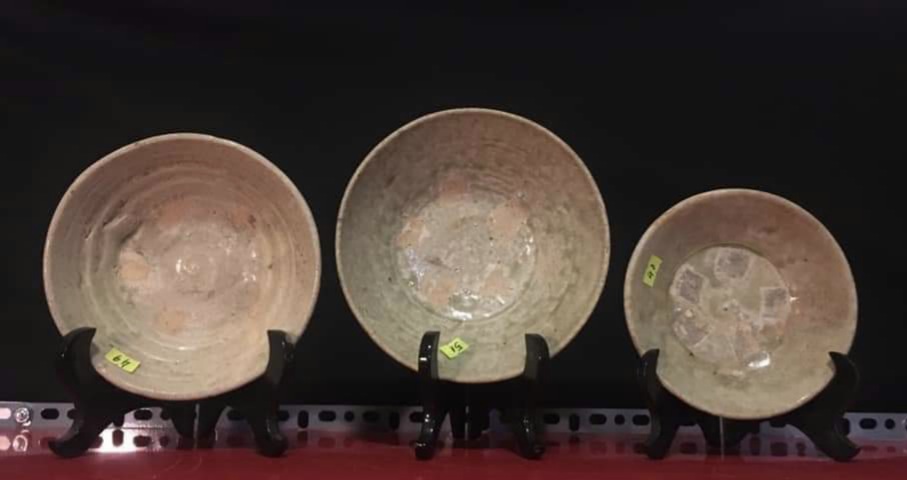 |
|
|
9/10th
cent. Vietnamese Guangdong type green glaze bowls |
|
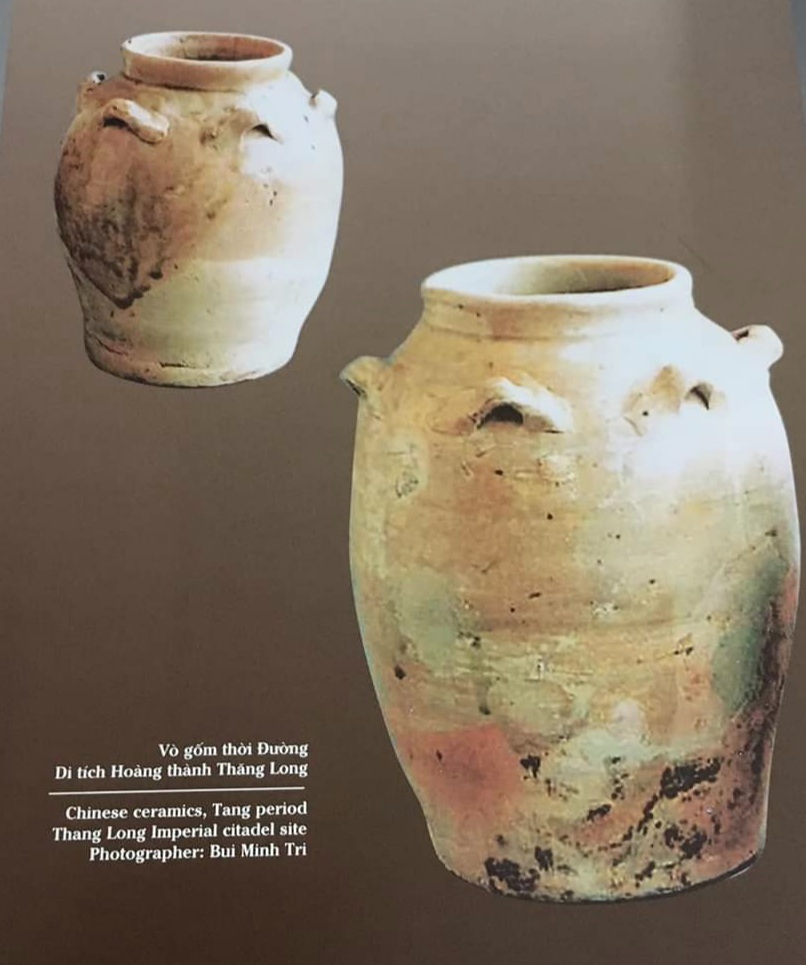 |
|
| Examples recovered from Thang Long Imperial citadel site. Attributed to Chinese but maybe Vietnamese | |
The shape of many of the Tuan Chau jars with lugs is similar to the above Chinese Guangdong Jar dated to 9/10th century.
Guangdong Jars found in the 9th Century Belitung wreck
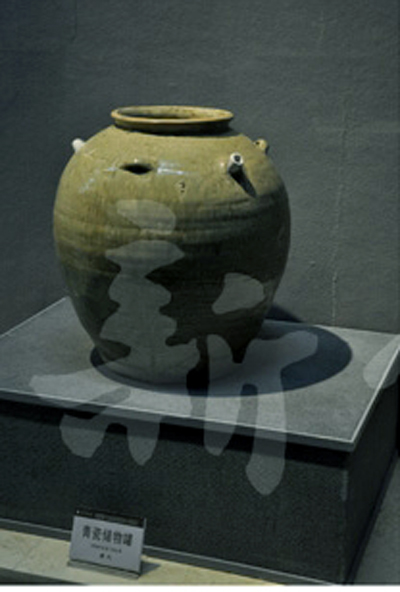 |
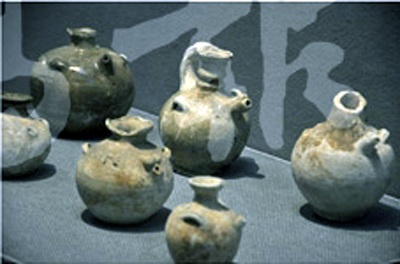 |
| Spouted Jar in Xinhui Museum | Other Greenwares in Xinhui Museum |
From the display of jars in the Belitung wreck, we note that generally the 9th century example has a smaller mouth and wider mid section. The Vietnamese examples and the Nanhan jar of the 10th century has a bigger mouth.
I did a comparison of the Tuan Chau greenware and shards of Greenware from the Guangdong Xinhui Guan Chong kiln. The paste appears to be rather similar. However, Tuan Chau vessels appear to have a thinner layer of more evenly applied glaze. The glaze on the Guan Chong vessels appears to be thicker, uneven and tends to pool into drips on lower unglaze section of the vessel.
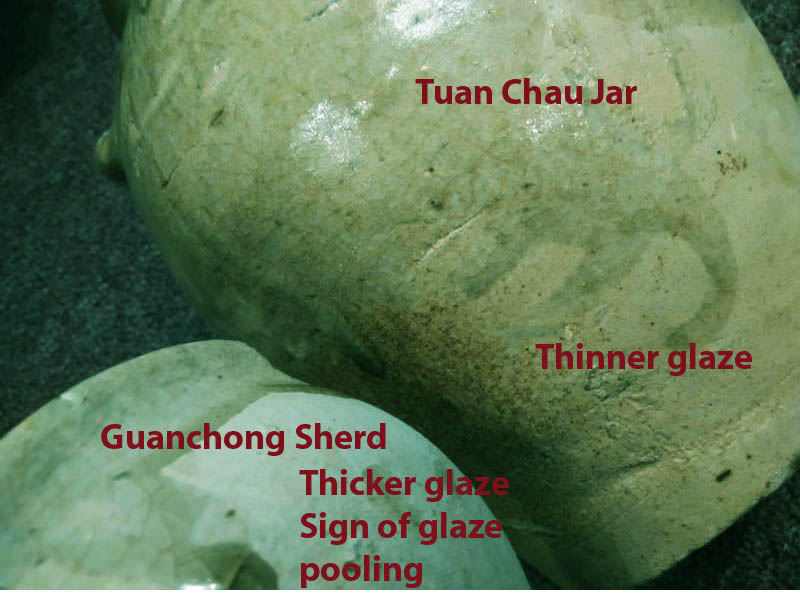 |
|
|
|
|
For the bowls, although similar stacking method was used, the unglaze stacking patches shows rather clear differences. For the Tuan Chau bowl, the rectangular shape indented patches are neatly formed by shaving away the glaze and a thin layer of the biscuit. Whereas for the Guan Chong example, the stacking patches although roughly rectangular in shape, appears to have been formed by wiping away the glaze. Lump of clay is placed on the unglaze patches to act as separator to support another bowl. Some of the Guan Chong sherds I have seen still have traces of the clay as the glaze was not removed fully and adhered to the clay during firing.
|
|
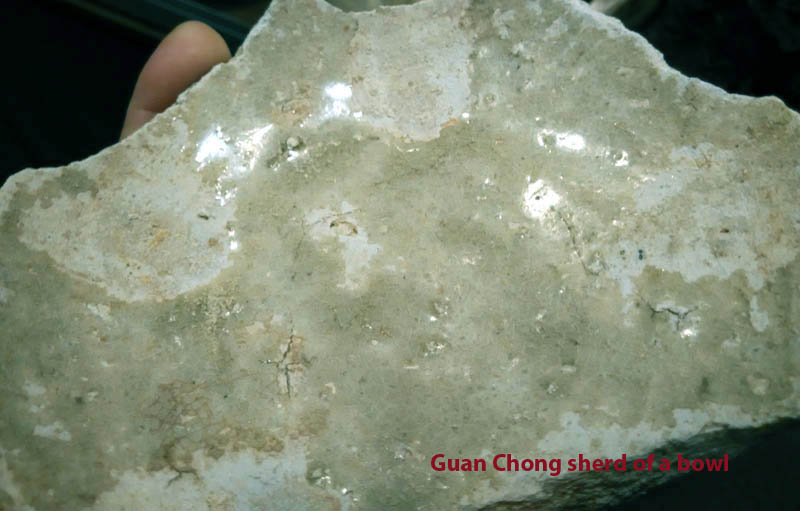 |
|
Comparison of the rectangular patches in the bowl |
|
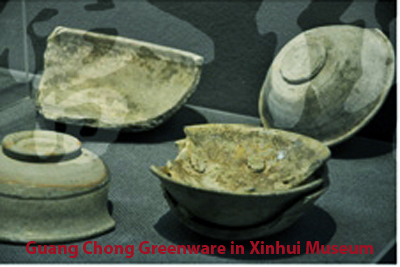 |
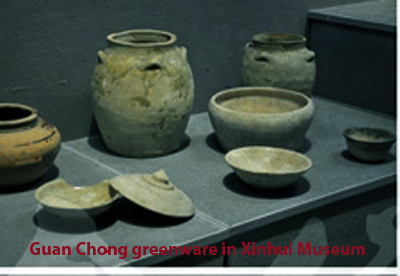 |
The bowl on the left photo shows lump of clay stucked to the unglaze patches
Based on archaeological and shipwreck findings, the first wave of active martime trade in ceramics most likely only occured during the 9th century. The Belitung shipwreck dated to 826 A.D has a sizeable cargo of Chinese ceramics, mainly Changsha and Yue wares. There were also significant quantity of Guangdong green glazed big jars. Such jars, termed Dusun jars, were treasured by the Southeast Asian natives and were passed down as heirloom.
The features of the Tuan Chau greenware clearly showed a clear adoption of the manufacturing technology of Guangdong potters. The type of vessels produced were the same and visually the glaze appears similar. The same stacking method for the vessels was also adopted. Was the technology transfer the result of migration of Guangdong potters or the local potters learnt it from the Guangdong potters? When did the production first commenced?
From the historical context, it mostly likely occurred during the 9th century, late Tang period. During this period, the Tang Dynasty was in a state of instability and chaos. One of the most distructive rebellions led by Huang Chao took place between 878 to 884. He sacked Guangzhou in 878 and according to Arab Geographer Abu Zaid many Muslims, Jews, Christians and Parsees perished. As Guangzhou was the port of exit for the martime trade to Southeast Asia and the West, the impact on foreign trade would have been disastrous. Many foreign traders fled from China. Many ended up in Annam (ancient name for Northern Vietnam) and used the port there to continue trading activities. According to recorded source, a Chinese official petitioned the Emperor that : "lately the precious and strange goods brought by ocean junks have mostly been taken to Annam to be traded there and called for action against Annam".
In Annam, there were several local revolts during the 8th and first half of 9th Century. Yunnan Nanzhou invaded Annam on several occasions during the 9th Cent but was defeated by Tang General Gao Pian(高 駢 )in 863 A.D. He was made Military Commisioner and under him there was relative stability and development in the region. During the 10th century, successive local lords from the Khúc clan , followed by Dương Đình Nghệ governed the region as military commissioner. In 939, Ngô Quyền established the Ngô Dynasty and following which set in motion a series of short-lived Dynasties. Finally, in 1009 A.D, Ly Dynasty, the first great dynasty of Vietnam was established.
Generally, from around 863 A.D onward there was relative stability in Annam. As mentioned earlier, the situation in Guangzhou had become difficult for the foreign traders to use as the base for trading activities. Comparatively, Annam was a safe haven and many may have shifted there and use the port at Tonkin to continue their business. As greenware was a demanded commodity, it would serve them well if the greenware could be sourced in Annam. Due to the social turbulence, the Guangdong kilns would have suffered from drop in demand. Some of the potters could have been forced to seek livelihood and migrated to Annam to set up kilns through the encouragement and assistance of the foreign traders. Tuan Chau island is ideally located to serve as the site to produce such greenwares. Its strategic location along the ancient maritime trade route, would have placed it in a good position to supply ceramics wares for regional maritime ceramics trade. Majority of Tuan Chau green glaze jars found in Vietnam possess physical features similar to those produced in Guangdong kilns during the 10th Century. A case in point is the jar excavated at the Guangzhou Nanhan Palace site. (Nanhan was one of the 10th century kingdom that ruled Guangdong, Guangxi and part of Northern Vietnam from 917 to 971 A.D.). Hence, the peak production period of the Tuan Chau kilns is likely in the late 9th/10th Century and those ceramics probably constituted the types that were exported.
Written by: NK Koh (3 Jun 2015)